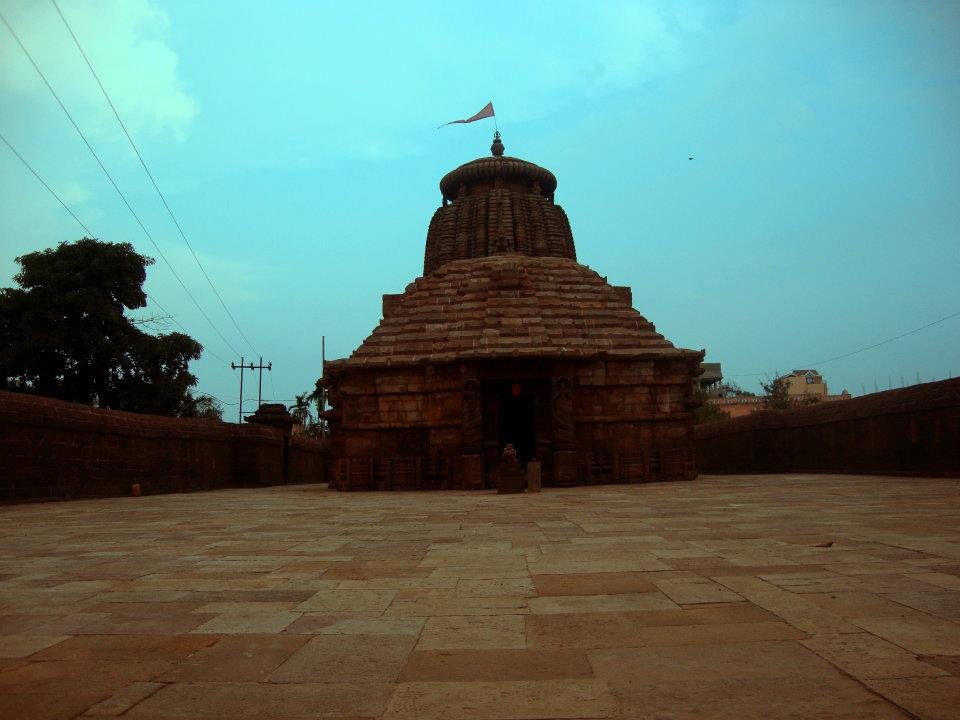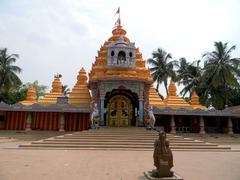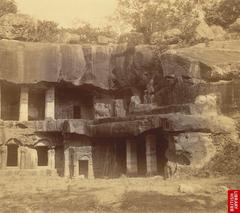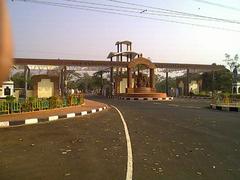
Megheswara Temple Bhubaneswar: Visiting Hours, Tickets, and Comprehensive Guide
Date: 14/06/2025
Introduction
Nestled in the historic heart of Bhubaneswar—revered as the “Temple City of India”—the Megheswara Temple stands as a shining testament to Odisha’s religious and architectural grandeur. Constructed in the late 12th century CE under the Somavamsi dynasty, this Shiva temple encapsulates the mature Kalinga style, distinguished by its curvilinear spire (rekha deula), pyramidal assembly hall (pidha deula), and intricately carved stone iconography. Megheswara, meaning “Lord of the Clouds,” signifies Shiva’s association with rain and fertility—an essential motif for agrarian Odisha. Today, the temple remains an active site of worship and cultural convergence, hosting daily rituals and major festivals like Maha Shivaratri, while attracting pilgrims, history enthusiasts, and travelers alike (historyofodisha.in, eOdisha.in, indiantouristplace.com).
Table of Contents
- Early Origins and Historical Setting
- Architectural Evolution and Features
- Religious and Cultural Context
- Festivals and Rituals
- Visiting Megheswara Temple: Hours, Tickets & Accessibility
- Conservation and Modern Significance
- Practical Visitor Information
- Nearby Attractions and Suggested Itineraries
- FAQs
- Summary and Recommendations
- Sources and Further Reading
Early Origins and Historical Setting
Megheswara Temple’s origins trace to the late 12th century CE, during the Somavamsi dynasty’s rule. The Somavamsis, who governed Odisha from the 9th to 12th centuries, oversaw a prolific era of temple construction. Bhubaneswar’s dense concentration of temples—over 500 within a few centuries—earned it the moniker “Temple City of India.” Megheswara’s construction marks the culmination of this temple-building tradition, reflecting the mature phase of Kalinga architecture (historyofodisha.in).
Architectural Evolution and Features
Style and Structure
Megheswara exemplifies the mature Kalinga style. The temple’s east-facing layout includes:
- Vimana (Sanctum Tower): The main tower rises approximately 15.5 meters, adorned with vertical projections and horizontal moldings that create a harmonious, rhythmic effect.
- Jagamohana (Assembly Hall): A rectangular hall with a pyramidal roof, slightly lower than the vimana, serves as the congregation space.
- Torana (Gateway): The entrance is marked by a beautifully carved makara torana, a signature of Kalinga architecture.
Sculptural Ornamentation
The temple is renowned for its elaborate carvings, including:
- Depictions of Shiva (in multiple forms), Parvati, Ganesha, Kartikeya, river goddesses Ganga and Yamuna, celestial musicians, apsaras, and tantric-inspired erotic couples.
- Mythological panels and narrative friezes, illustrating spiritual stories and moral lessons.
- Unique sculptures such as Godhana Harana by Brahma, Lakuli (possibly a form of Durga), and a six-handed Nataraj.
Construction Materials
Built from locally quarried fine-grained sandstone, the Megheswara Temple employs dry masonry techniques. The sculpture was carved directly on the stone blocks, resulting in seamless integration of art and architecture (odishatour.in, indiantouristplace.com).
Religious and Cultural Context
Dedicated to Lord Shiva, Megheswara has been a focal point of Shaivite worship for centuries. The name “Megheswara” (Lord of the Clouds) reflects both mythological associations and the temple’s role in rituals meant to invoke rain and agricultural abundance—critical to the region’s agrarian society.
The temple’s sanctum houses the Shiva lingam, and daily rituals, aarti, and abhishekam (ritual bathing) are performed by resident priests. Major festivals, most notably Maha Shivaratri, see large congregations and special ceremonies (eOdisha.in).
Bhubaneswar’s religious landscape is a mosaic comprising Shaivism, Vaishnavism, Shaktism, and even remnants of Jain and Buddhist traditions. Megheswara Temple is part of “Ekamra Kshetra,” the city’s sacred geography, and plays a vital role in its spiritual and community life (Travel India).
Festivals and Rituals
- Maha Shivaratri: The temple’s most significant festival, marked by night-long vigils, fasting, and rituals.
- Pradosh Vrat & Shravan Month: Devotees offer water, milk, and bilva leaves to Shiva, with heightened activity during these occasions.
- Daily Rituals: Morning and evening aarti, abhishekam, and prasad distribution engage both locals and visiting pilgrims (eOdisha.in).
Visiting Megheswara Temple: Hours, Tickets & Accessibility
- Timings: Open daily, generally from 4:00 AM to 8:00 PM (with most sources and on-site experience indicating core visiting hours as 6:00 AM to 8:00 PM).
- Entry Fee: Free for all visitors. Donations are welcome and support temple maintenance.
- Accessibility: The temple is partially accessible, with ramps near the entrance. Some areas have steps and uneven stone floors, so assistance may be needed for visitors with mobility challenges.
- Photography: Allowed in outer precincts; avoid flash and respect restrictions during rituals.
How to Reach
- By Air: Biju Patnaik International Airport (approx. 6–7 km).
- By Train: Bhubaneswar Railway Station (approx. 4–5 km).
- By Road: Easily reachable via local buses, taxis, auto-rickshaws, and app-based ride services (odishatour.in, indiantouristplace.com).
Conservation and Modern Significance
Megheswara Temple faces challenges from weathering, biological growth, and urban pressures—including pollution of its sacred tank. Recent conservation efforts by organizations like INTACH and the Bhubaneswar Municipal Corporation focus on structural restoration and environmental protection.
The temple’s inclusion in heritage circuits and its candidacy for UNESCO World Heritage status underscore its importance. Heritage walks and guided tours, such as Ekamra Walks, enhance public awareness and visitor engagement (historyofodisha.in).
Practical Visitor Information
Facilities and Amenities
- Footwear Stand: Shoes must be removed at the entrance.
- Drinking Water: Limited; advisable to bring your own.
- Restrooms: Scarce in the immediate vicinity; plan ahead.
- Shops: Small stalls nearby sell ritual offerings and souvenirs.
- Guides: Local guides are available for in-depth temple tours (indiantouristplace.com).
Dress Code and Etiquette
- Wear modest attire covering shoulders and knees (indianvisit.com).
- Remove footwear before entering temple precincts.
- Seek permission before photographing rituals or people; exterior photography is generally permitted.
- Maintain silence and respect ongoing ceremonies.
Nearby Attractions and Suggested Itineraries
Megheswara Temple is part of Bhubaneswar’s “Old Town” temple circuit, making it easy to combine with:
- Lingaraj Temple: The city’s largest and most revered Shiva shrine.
- Mukteswara Temple: Celebrated for its exquisite archway and sculptures.
- Rajarani Temple: Renowned for its sculptural innovation.
- Parashurameswar Temple: An early Nagara-style temple.
- Odisha State Museum: For a deeper understanding of local heritage.
A half-day visit can cover Megheswara and nearby temples; 2–3 days are ideal for a comprehensive temple city experience (travelsnwrite.com, stampedmoments.com).
FAQs
Q: What are the visiting hours?
A: Open daily, typically from 4:00 AM to 8:00 PM. Most visitors find 6:00 AM to 8:00 PM optimal.
Q: Is there an entry fee?
A: No, entry is free for all.
Q: Are guided tours available?
A: Yes; local guides and heritage walks can be arranged nearby.
Q: Is the temple accessible to people with disabilities?
A: Some ramps are available, but steps and uneven surfaces may pose challenges.
Q: When is the best time to visit?
A: November to February offers pleasant weather; Maha Shivaratri provides unique cultural experience but attracts larger crowds.
Q: Is photography allowed?
A: Yes, in the exterior and non-ritual areas; please avoid flash and be respectful during ceremonies.
Summary and Visitor Recommendations
Megheswara Temple stands as a living monument to Odisha’s spiritual, artistic, and architectural legacy. Its late 12th-century origins, intricate sculptural details, and ongoing religious significance make it a must-visit for devotees, scholars, and cultural travelers alike. The temple’s accessible location, free entry, and immersive spiritual ambiance offer a tranquil yet vibrant experience, further enriched by nearby historical sites and active community rituals.
Conservation initiatives and heritage programs ensure that Megheswara Temple’s unique legacy is preserved for future generations. For a fulfilling visit, plan to explore the temple’s architectural marvels, attend festivals for a deeper cultural connection, and use local guides or apps like Audiala for enhanced insights and travel tips. By observing respectful etiquette and supporting preservation efforts, visitors can contribute meaningfully to the temple’s continued vitality (historyofodisha.in, eOdisha.in, indiantouristplace.com).
Sources and Further Reading
- Megheswara Temple Bhubaneswar: Visiting Hours, Tickets & Historical Guide, 2024 (historyofodisha.in)
- Megheswara Temple Bhubaneswar: Visiting Hours, Tickets & Cultural Significance, 2024 (eOdisha.in)
- Megheswara Temple Bhubaneswar: Visiting Hours, Tickets & Architectural Highlights, 2024 (indiantouristplace.com)
- Megheswara Temple Bhubaneswar: Visiting Hours, Tickets, and Heritage Guide, 2024 (odishatour.in)








